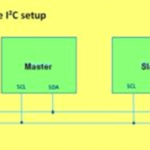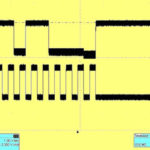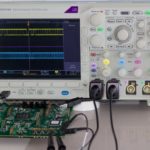 I2C and SPI are two of the most widely used serial communication buses for embedded systems and each comes with its own set of advantages and disadvantages. SPI is by nature the faster protocol, but that comes at the expense of higher pricing and limited scalability. To close the trade-off gap between I2C and SPI in Serial EEPROMs, Microchip Technology Inc. has released the first commercially available I2C Serial EEPROM with support for 3.4 Mbit/s data rates, the 24CS512, making it the fastest I2C EEPROM in the world.
I2C and SPI are two of the most widely used serial communication buses for embedded systems and each comes with its own set of advantages and disadvantages. SPI is by nature the faster protocol, but that comes at the expense of higher pricing and limited scalability. To close the trade-off gap between I2C and SPI in Serial EEPROMs, Microchip Technology Inc. has released the first commercially available I2C Serial EEPROM with support for 3.4 Mbit/s data rates, the 24CS512, making it the fastest I2C EEPROM in the world.
Until now, I2C Serial EEPROM bus speeds have been limited to 1 MHz, which is sometimes not fast enough, particularly for larger memory size applications. Engineers requiring faster speeds out of their Serial EEPROMs usually choose SPI, which is typically specified for up to 20 MHz speeds. However, they have paid approximately 30 percent higher prices for the added speed while making additional sacrifices in noise susceptibility, design complexity, and scalability.
Microchip’s new 24CS family of Serial EEPROMs are now 3 to 4 times faster than previous I2C EEPROMs, starting with the launch of the 24CS512. The 512 Kbit memory provides a balanced solution for applications that benefit from higher data transfer speeds while retaining the simplicity and cost advantage of I2C.
For applications requiring many different devices on the bus, SPI begins to have a scalability problem because each device on the bus requires a separate I/O pin from the microcontroller for Chip Select. More I/O pins often lead to requiring a larger and more expensive microcontroller. I2C has device addressing built into the bus protocol, so it is possible to have many devices on the bus, all sharing the same two clock and data I/O lines. This becomes a key factor as today’s designs are only growing in complexity and the need for a large number of devices on the bus is becoming more common.
The 5 Lead SOT-23 is one of the most widely used packages for 1-64 Kbit Serial EEPROMs in the industry due to their small size and price point. Previous process technology limitations have prevented the utilization of this package for higher density EEPROMs. The 24CS512 presents a leap forward in geometry that now enables us for the first time to offer a 512 Kbit Serial EEPROM in this small affordable package.
The 24CS512 makes managing your data easy with its software write protection, lockable ID page, and pre-programmed 128-bit serial number. Traditional I2C EEPROMs utilize hardware-based write protection that only allows locking or unlocking the entire memory array via an external pin, which severely limits the possible ways to protect data. The 24CS512 retains this legacy feature, but also divides the memory array into 8 different zones and provides the ability to individually write protect any combination of zones via software.
Need to protect an even smaller section of critical code? The Lockable ID page feature is a 128-byte memory space separate from the main array. This feature is intended to be used for storing things like factory calibration settings, manufacturing data, MAC addresses, or other identifying information that can be programmed and then set to read-only. Additionally, each 24CS512 comes pre-programmed from our factory with a globally unique 128-bit serial number that can be used by customers as a unique product identifier. This serial number can eliminate the time-consuming step of performing and ensuring the serialization of a product on and across multiple manufacturing lines.
For additional information, contact a Microchip sales representative, authorized worldwide distributor, or visit Microchip’s website. To purchase products mentioned here visit our purchasing portal or contact a Microchip authorized distributor.






